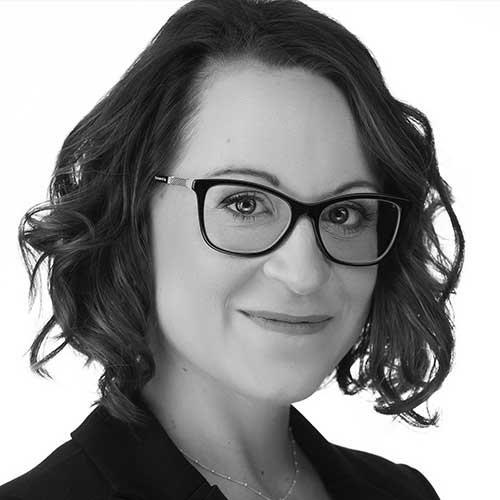There is an urgent, unmet need for focused drug development for pediatric cancers with insufficient or ineffective treatment options.

Holly R. Zink, M.S.A., ACRP
Director of Research and Programs, CureSearch for Children’s Cancer
Holly Zink is responsible for setting the scientific research agenda and direction for CureSearch for Children’s Cancer, and administering all research programs and initiatives. She leads CureSearch’s scientific education programs and creates synergy between research milestones and its community of patient families, volunteers, donors, and partners.
Why are clinical trials important?
15,000+ children are diagnosed with cancer each year in the United States. Current standard therapies for many childhood cancers are over 30 years old and have lifelong, toxic, and debilitating side effects.
While new treatments — most often designed originally for adults — have increased overall survival rates, children often face longer, more intense treatment schedules that contribute to their lifelong cumulative burden of disease. Treatment-related toxicities lead to secondary cancers, organ damage, early onset heart failure, and cognitive and growth deficits that undermine their future health, happiness, and longevity.
Clinical trials connect more patients to more therapies, ultimately saving more lives.
What makes pediatric clinical trial design different?
From the DNA alterations that drive cancer development to the cells from which tumors are derived, cancer in children is different from cancer in adults. The need to prioritize and quickly develop new treatments specifically for children is critical and particularly impactful when considering the quality and quantity of life that better childhood cancer treatments will provide. But focused pediatric clinical trials are not taking place at the rapid pace needed to address unmet needs in pediatric cancer.
On average, clinical trials for pediatric cancers begin 6.5 years after their adult trial counterparts, during which thousands of children will not survive. There is an urgent need to bring new treatments to pediatric cancer patients quickly.
Translational research is not making it into the clinic fast enough.
Bringing science from the discovery phase, to the translational research phase, to clinical trial and, eventually, to commercialization is incredibly difficult. Often, good science does not make it past the “valley of death,” which is the point between scientific progress and commercialization.
Basic science forms the foundation of biomedical research. But translating basic science findings into safe and effective therapies is a challenge with roadblocks occurring at institutional, cultural, and policy levels.
Limited federal funding generally supports basic or discovery phase pediatric research and, on the opposite end of the development timeline, late-phase clinical trials rely on support from biotech and pharmaceutical companies. There is a significant gap in funding for those areas in between — the “valley of death,” where translational, preclinical, and early-phase clinical trials lie.
Cutting-edge pediatric clinical trials bring hope to children who are otherwise out of options.
Funded by a CureSearch award, Drs. David Munn and Theodore Johnson at the Medical College of Georgia at Augusta University are conducting a unique Phase 1 Clinical Trial that seeks to address resistance to chemoimmunotherapy by adding a second immunotherapy agent to the protocol for patients age 12-25 with brain cancer. The trial pairs both the IDO inhibitor they helped develop and ibrutinib with chemotherapy in an effort to further enhance the immune response against the tumor.
“We chose malignant brain tumors because this is an underserved field,” Dr. Munn said. “Once these children recur, there is seldom a standard treatment pathway that can offer a cure, so this population of patients is well-positioned to benefit from new modalities of therapy.”
Dr. Munn’s clinical trial design is highly innovative. In addition to the traditional goals of drug dose-finding and toxicity measuring, the clinical trial will explore the hypothesis that combination therapies enhance the effectiveness of the existing approach.
Normally, this would require a complex, multi-arm study approach. However, Dr. Munn’s team is able to leverage its unique population of patients who are already being treated with IDO-inhibitor alone to provide a compelling test of the hypothesis, even in a single-arm Phase 1 design.
The results of this trial could lead to profound, life-changing, life-extending impacts for children who have been told they are out of treatment options. These out-of-the-box innovations in clinical trial design are critical to driving more breakthroughs, faster.
How can a targeted funding advance research more rapidly?
CureSearch for Children’s Cancer only fundsresearch projects with the greatest potential of advancing to pediatric clinical trials by the end of a three-year grant. CureSearch’s one-of-a-kind scientific and industry advisory councils know where the problems lie and work closely with leaders across the pediatric cancer ecosystem to overcome them. As a result of our exhaustive review process, CureSearch-funded preclinical projects are 7x more likely to advance to clinical trials and get there 1.5x faster compared to the national average. Collaboration is crucial to creating a paradigm shift in pediatric drug development. By working together with a laser focus, all experts in pediatric cancer can drive cutting-edge research out of the lab and into the clinic, providing new, less-toxic treatment options for the children who are counting on us.

